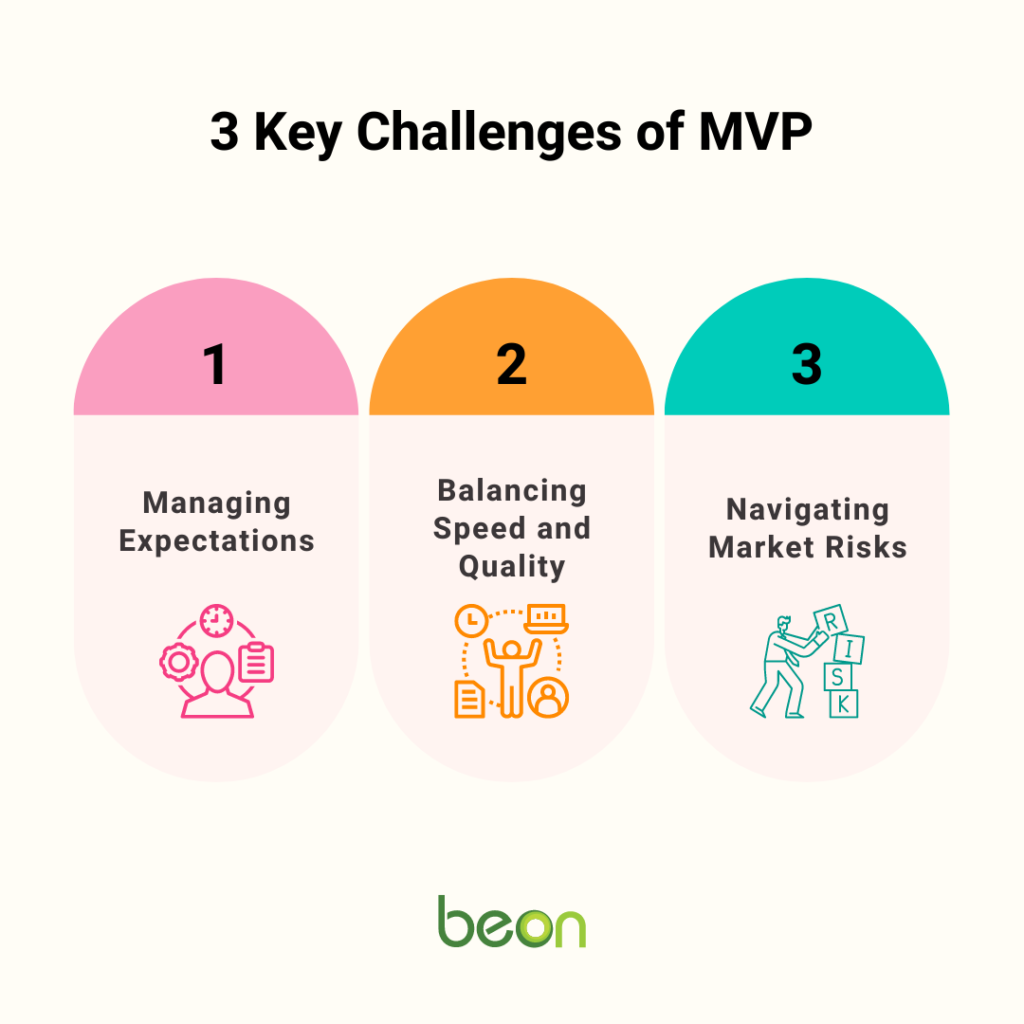In the ever-evolving landscape of product development, the term “Minimum Viable Product” (MVP) has become a buzzword synonymous with innovation and rapid iteration.
But what is MVP, and why has it gained such prominence in the tech industry and beyond? In this article, we will explore what is MVP, its significance in today’s business environment, and how organizations can leverage it to drive innovation and success.
Table of Contents
| What Is MVP |
| Why it Matters |
| 5 Key Principles of MVP Development |
| Examples of Successful MVPs |
| Challenges and Considerations |
| MVP: A Powerful Tool for Driving Innovation. |
What Is MVP
A Minimum Viable Product, commonly known as an MVP, is fundamentally the most stripped-down version of a product that allows a team to collect the maximum amount of insights on customer preferences with the least effort.
The term MVP was first introduced by Eric Ries in his book The Lean Startup. The MVP product development approach is characterised by the fact that, unlike traditional methods, it prioritises speed, experimentation, and customer feedback over all other elements.
A MVP, typically, contains only essential features necessary to address the core problem or deliver the primary value proposition to early adopters. Product development teams only include what’s needed to test ideas and get feedback in the MVP.
This lean approach enables the team to focus on the primary customer requirements. They don’t spend too much time or resources on building unnecessary (at least at that point in time) functionalities or perfecting features that might not matter to the users.
Why it Matters
In today’s fast-paced and hyper-competitive market, the ability to innovate quickly and adapt to changing customer needs is critical for survival. MVPs offer a systematic approach to innovation, enabling companies to validate their assumptions, mitigate risks, and iterate rapidly based on real-world feedback.
Moreover, MVPs foster a culture of experimentation and learning within organisations. By encouraging teams to embrace failure as a natural part of the innovation process, MVPs create an environment where creativity thrives and breakthrough ideas can emerge.
This iterative approach not only accelerates time to market but also increases the likelihood of delivering products that truly resonate with customers.
5 Key Principles of MVP Development
While the concept of MVP may seem straightforward, its successful execution requires adherence to five key principles:

- Focus on Core Value: Identify the core problem or value proposition the product aims to address and prioritise features that directly contribute to solving that problem or delivering that value. By concentrating on essential functionalities, teams can minimise development time and focus resources on what matters most to users.
- Develop Based on Feedback: Launch the MVP quickly to gather feedback from real users. Use this feedback to refine the product iteratively, incorporating user insights into subsequent versions. This approach ensures that the product evolves in alignment with user needs and preferences, increasing its likelihood of success in the market.
- Measure What Matters: Define clear metrics and key performance indicators (KPIs) to track the success of the MVP. Focus on actionable metrics that provide meaningful insights into user behaviour and engagement. By establishing concrete benchmarks for success, teams can assess the effectiveness of the MVP and make data-driven decisions for future development efforts.
- Embrace Iterative Development: Adopt an agile approach to development, breaking down the product into small, manageable increments. This allows for quick adaptation in response to changing market conditions or user needs. By delivering value in incremental stages, teams can validate assumptions early, mitigate risks, and course-correct as needed, ultimately leading to a more robust and successful product.
- Stay Lean and Flexible: Keep the MVP lightweight and flexible, avoiding unnecessary complexity or over-engineering. This enables faster iteration cycles and reduces the risk of sunk costs in case of pivots or changes in direction. By maintaining a lean development process, teams can respond quickly to feedback and market trends, maximising their ability to deliver value to users while minimising waste.
Examples of Successful MVPs
Numerous successful companies have leveraged the MVP approach to disrupt industries and redefine market norms. Some notable examples include:

- Dropbox: The cloud storage service started as a simple MVP—a video demonstrating how the product would work. Based on the overwhelming positive response to the video, the founders built the MVP, allowing users to sign up for early access. This validated the demand for the product before investing in full-scale development.
- Zappos: The online shoe retailer began by taking photos of shoes from local stores and posting them online. When customers placed orders, the founders would purchase the shoes at retail price and ship them to the customers. This MVP validated the market demand for online shoe shopping without the need for an extensive inventory or infrastructure.
- Instagram: The photo-sharing app started with a simple MVP that allowed users to upload and filter photos before sharing them with friends. By focusing on the core value proposition of easy photo sharing and social interaction, Instagram quickly gained traction and eventually grew into one of the most popular social media platforms.
Challenges and Considerations
While MVPs offer numerous benefits, they also pose challenges and considerations for organisations:

- Managing Expectations: Setting realistic expectations with stakeholders is crucial, as MVPs may not deliver the full set of features or functionalities envisioned for the final product. Clear communication about the iterative nature of MVP development is essential to avoid misunderstandings.
- Balancing Speed and Quality: While speed is a primary goal of MVP development, quality should not be compromised. Finding the right balance between delivering quickly and ensuring a positive user experience requires careful prioritisation and planning.
- Navigating Market Risks: Launching an MVP into the market carries inherent risks, including potential negative feedback or failure to gain traction. Organisations must be prepared to pivot or iterate based on market dynamics and user feedback to mitigate these risks effectively.
MVP: A Powerful Tool for Driving Innovation.
In today’s dynamic and competitive business landscape, the Minimum Viable Product has emerged as a powerful tool for driving innovation and staying ahead of the curve.
By focusing on the core value proposition, iterating based on real-world feedback, and embracing a culture of experimentation, organisations can leverage MVPs to validate ideas, mitigate risks, and deliver products that truly resonate with customers.
Embracing the MVP approach to innovation positions organisations for long-term success in an ever-changing marketplace.
Follow us for more on LinkedIn


